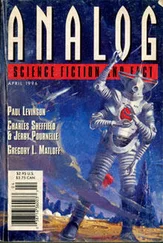It is not suited to new situations or operating under stress, and is more at home with using a narrow focus to detect patterns, so it can create a narrative about the past or the future.
2. Metacognition: Thinking about thinking
Our BLUE mind enables us to think about how we think and feel, an extraordinary ability shared only with some primates in the animal kingdom. This process of stepping back and reflecting on our own and other people’s mental states is called metacognition, and it is this ability that allows us to adjust our emotional reactions. If we can’t reflect and review, how can we ever learn?
Metacognition occurs when our RED brain processes information from our body and environment through the limbic system, then passes it over to our BLUE brain for a second look. The RED and BLUE systems meet at the right orbitofrontal cortex, which is located in BLUE territory (as we’ve heard), behind the right eye socket. This is the key way-station, where the information is handed over for further review by the BLUE brain, particularly the left pre-frontal cortex. It assesses and adapts our perception of the current situation, considers how this matches with our goals and objectives, and makes conscious adjustments, before the information is returned to the right orbitofrontal cortex, which arrives at the final RED–BLUE combination.
Metacognition is critical for maintaining control over our mental responses, and for learning to perform under pressure. (It sits at the heart of the RED–BLUE tool, which we’ll meet later in the book.)
3. Working memory: Our mental laptop screen
Picture the mind as working like a laptop.
A laptop has a lot of files stored away in its hard-drive memory, where we can’t see them. We’ve forgotten most of the files, but they’re still there somewhere. Our mind is the same, with a huge number of files stored away in our unconscious mind, beyond our awareness.
The working surface of our laptop is the screen, which sits at the interface between the inside and outside worlds. We draw up information from memory storage (our inside world) and we also draw in information from the internet, or by inputting new data (our outside world).
Although it occupies the crucial interface position, the screen has a big limitation: we can only work on a small number of files or channels at a time, otherwise we quickly become overloaded and lose track of things.
Our brain works the same way. The mental equivalent of our laptop screen is called our working memory, a vital mental function located in prime BLUE-mind real estate in our pre-frontal cortex, the part of the frontal lobes that sits just above our eye sockets.
Though our long-term memory has enormous storage capacity, the capacity of our working memory is tiny. A famous psychology experiment in the 1950s showed that we can only hold between five and nine items in our working memory at any one time. (This is one reason why telephone numbers are usually seven or eight digits long, and why we break them up into chunks.) This experiment was later revisited because it was based on simple, learned sequences of items like numbers. When pieces of real-life information were used, the capacity dropped to just four or five.
But in some ways the human mind doesn’t work like a computer. On our laptop, our files are emotionally neutral and stored in a binary system of 0s and 1s, which allows the exact same file to be reopened every time. But in our mind they’re stored according to emotions, which constantly adjust the file contents, so that files are continually modified over time.
When it comes to operating under pressure, our working memory capacity can plummet. Normally we call up files (memories) when we want them, but when we’re under pressure, any memory that’s emotionally similar to the ones we have open can make its way to the surface. Worse still, thanks to our RED brain, any memories that contain threat – and therefore emotion – take precedence. Our working memory loses capacity quickly, so that we can only focus on one thing at a time, and have trouble accessing even basic information. We become self-conscious, just as worried about how we look as what we’re doing. And the content of our working memory changes from minute to minute, so we keep losing what we were working on.
In the end our screen may overload and freeze, and we need a moment to shut down and reboot before we can see things clearly again.
As the screen sitting at the interface between our internal and external worlds, our working memory sits at the heart of our mental performance under pressure. It acts like Brain HQ, because it’s where we gather information from our immediate environment, match it against information and patterns that we call up from our memory banks, manipulate the information a bit, then make a decision and act.
When our screen is clear and at full power, it drives us forward. But when our RED mind interferes, our crucial BLUE capacity is compromised.
Through metacognition, the BLUE pre-frontal cortex has a huge role in keeping RED activation in check. RED overdrive, which leads to shrinking or disintegration of our BLUE mental screen, and loss of braking power on our RED system, is a double whammy for performance under pressure. Our BLUE logical analysis, metacognition and working memory can all be severely affected – and quickly.
Zac is a competitive gamer in the middle of a tense duel. He doesn’t want to lose and face the social media backlash he suffered last time around.
He’s playing right at his limit when he receives a text message from his girlfriend, asking why he hasn’t turned up to meet her as promised. He completely forgot in the midst of his online battle, and now he’s facing an argument.
He loses concentration, and his opponent strikes and gains the advantage, which makes Zac angry and even more distracted. Things go from bad to worse. He gets tunnel vision and starts missing background details. He becomes erratic, swinging between being too hesitant and being too impulsive. He can’t think straight, and his mind keeps jumping to how he’s going to explain things to his girlfriend. He feels like he is playing against two opponents – the one online and himself!
Performing effectively under pressure is about keeping our BLUE mental screen clear even during significant RED mind activity.
Like it or not, our RED and BLUE minds have an intimate reciprocal relationship. It is, in a sense, like a lifelong marriage.
How we manage that marital relationship will go a long way to determining how far we travel towards our potential. When RED and BLUE are working harmoniously together, we are in a position to do more with our life. When they are at odds, our performance suffers.
For effective performance under pressure, we need RED and BLUE to be operating in the right proportions to suit the situation.
In life-threatening moments, RED beats BLUE because survival beats potential. When we’re in genuine danger it’s time for emergency action, not reflection. The RED fight–flight mechanism goes into overdrive and more or less shuts down BLUE functioning.
In the reverse direction, the BLUE system can dampen down the RED response, but can’t switch it off. Survival never entirely goes out of fashion!
So the RED–BLUE dynamic is that RED operates in the here and now and can at any moment severely disrupt BLUE with emotions; while BLUE constantly works away to keep the emotional RED reactions and impulses in check, probing the past and scanning the future. At our best, our RED and BLUE minds will complement each other as they work in tandem.
Читать дальше












